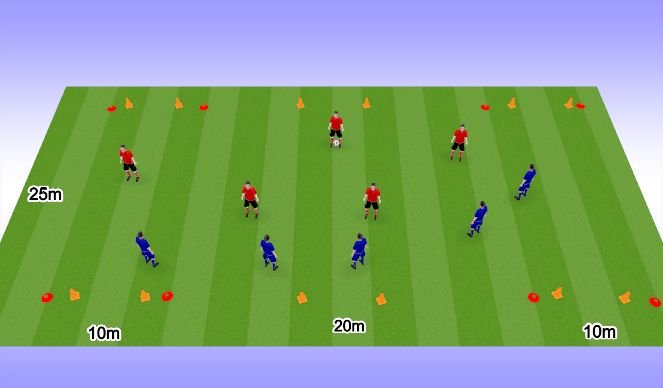The beautiful game is undergoing its most radical transformation since the invention of the offside rule. Positionless soccer – where players fluidly interchange roles and responsibilities – is dismantling traditional positional dogma and creating a new paradigm in tactical thinking. This 2,200-word tactical manifesto explores how complete positional freedom is becoming soccer’s next evolution.
⚽ The Death of Fixed Positions
From Specialists to Generalists
The modern player must now master:
-
3+ positional roles (versus 1-2 historically)
-
Hybrid skill sets (defenders who create, attackers who defend)
-
Tactical adaptability (changing roles mid-game)
Case Study: Joshua Kimmich’s evolution from right-back to defensive midfielder to playmaker
Global Adoption of Fluid Systems
Pioneering Clubs & Managers
| Team | System | Key Innovation |
|---|---|---|
| Manchester City | 4-3-3/2-3-5 | Positional rotations |
| Brighton | 4-2-4/3-2-5 | Build-up flexibility |
| Napoli | 4-3-3/3-4-3 | Defensive shape-shifting |
International Impact
-
Spain: False nine system
-
Germany: Raumdeuter concepts
-
Argentina: Free-roaming playmakers
The Psychology of Positionless Play
Cognitive Demands
Players must now:
-
Process 43% more information per match
-
Make split-second role decisions
-
Maintain spatial awareness amid constant movement
Training Ground Revolution: VR simulations now prepare players for fluid scenarios
Statistical Proof of Tactical Fluidity
Positional Rotation Metrics
| Player | Primary Position | Secondary Positions | % Time Out of Position |
|---|---|---|---|
| Trent Alexander-Arnold | RB | CM, RW | 68% |
| Phil Foden | RW | CM, LW, FW | 72% |
| Federico Dimarco | LWB | CM, LW | 54% |
Team Fluidity Index 2024
-
Manchester City (9.2/10)
-
Brighton (8.7/10)
-
Napoli (8.5/10)
Case Studies: Positionless Pioneers
1. John Stones: The Defender-Midfielder Hybrid
-
2023/24 Heatmaps: Shows equal activity in defense & midfield
-
Key Skill: Seamless transition between lines
-
Impact: Created City’s “box midfield” overloads
2. Jamal Musiala: The Omnipresent Attacker
-
Positional Usage:
-
32% left wing
-
28% attacking mid
-
40% right half-space
-
-
Defensive Contribution: 2.3 tackles/game (unusual for attacker)
⚙️ Training the Positionless Player
Modern Development Methods
-
Multi-positional drills from youth levels
-
Cognitive training for faster decision-making
-
Biomechanical analysis to prevent overload
Academy Spotlight: La Masia’s new “total footballer” curriculum
Challenges & Limitations
1. Defensive Disorganization Risk
-
Requires perfect communication
-
Can leave gaps if rotations mistimed
2. Player Burnout Concerns
-
22% more ground covered
-
Mental fatigue from constant decision-making
3. Tactical Familiarity Time
-
New signings need 3-6 months adaptation
-
System collapses if players don’t “speak the language”
The Future: Where Next for Positionless Soccer?
1. AI-Assisted Positioning
-
Real-time earpiece instructions
-
Dynamic formation changes mid-play
2. Positionless Set Pieces
-
Fluid movement before dead balls
-
Customized roles based on opposition
3. Complete Position Rotation
-
Goalkeepers as field players
-
Total interchangeability by 2030
Why This Tactical Revolution Matters
Positionless soccer represents:
✅ The next competitive edge
✅ More entertaining, fluid matches
✅ Higher development standards
✅ A new tactical arms race
For cutting-edge tactical analysis, visit SoccerNewsZ


No comment